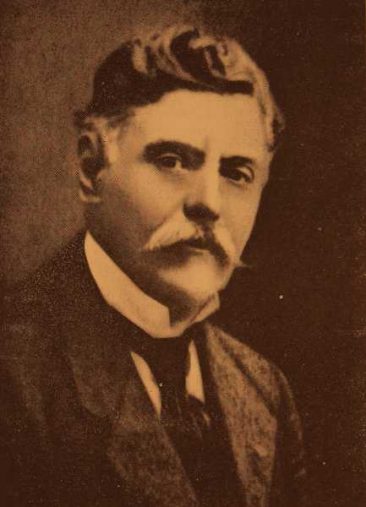Birth of Armenag Yegarian (May 10, 1870)

One of the leaders of the heroic resistance of Van in April-May 1915, Armenag Yegarian was born in the “Hanguysner” section of the city of Van, considered one of the oldest yet most developed neighborhoods in the Aykestan area, on May 10, 1870. He studied at the Normal School under Megerdich Portugalian. After the school was closed by the Turkish authorities, he was educated under the tutelage of Megerdich Avedisian and Kalousd Aslanian, future leaders of the Armenagan Party, founded in 1885. At the same time, he worked as a presser in a tailor shop.
Yegarian joined the Armenagan Party in 1887. He was soon selected to engage in the transportation of weapons from Persia to Van, soon becoming the most experienced gun runner for the Armenagans. Meanwhile, the Turkish authorities were keeping a close eye on Van. In 1892, Nouri was appointed chief of police. Due to his anti-Armenian stance, Armenagans decided to murder Nouri, and Panos Terlemezian and Armenag Yegarian took on this responsibility. Yegarian assumed the task of studying the police chief’s movements and Terlemezian succeeded in killing Nouri while the latter was making his regular round of inspection in an Armenian neighborhood.
Nouri was succeeded by Abdul Hamid’s trustworthy adjutant, Saadeddin Pasha, who was tasked with organizing the massacre of Armenians in the Van region. Upon his return from Europe, Megerdich Avedisian, founder and leader of the party, settled in Salmast (Iran). Yegarian kept him informed about the situation in Van. By January 1896, the prospects of massacre were clear. Avedisian decided to go to Van to make the necessary preparations, while Yegarian remained in Salmast. where he was unexpectedly arrested by the Iranian authorities when he was getting ready for another trip to transport guns.
The successful self-defense of Van in June 1896 ended when the Sultan sought the mediation of the Western powers, promising to guarantee the life of the Armenians of Van. After some negotiations, the Armenian defenders agreed to leave for Persia, escorted by Ottoman troops. En route, as nearly 1,000 Armenians led by Avedisian marched towards the border, they were massacred by Ottoman troops and Kurdish tribesmen.
In 1897, Yegarian was released from jail and returned to Van with a 40-member group. He continued his efforts to stockpile weapons. A year later, he got married and attempted to settle down by going into the rug business. While conducting his business, he transported weapons to Van, along with rugs, after coming to an agreement with Kurdish tribal chieftains. He relocated to Urmia in 1903. His home became a crossing place for all Armenian fugitives and travelers. He became the most influential figure in Urmia and surrounding areas.
In the spring of 1909, following the proclamation of the Ottoman Constitution, Yegarian returned to Van with his family, expecting an improvement of life conditions for Western Armenians. He headed the Van branch of the newly founded Armenian Constitutional Democratic Party while continuing the rug business.
In April 1915, when Van governor Jevdet Bey unleashed his repressive policy against the Armenian population of the vilayet, the Armenian political leadership decided to challenge their destiny of death. A military body was formed, headed by Yegarian and with the cooperation of ARF member Bulgaratzi Krikor and Gaidzak Arakel. Along this military unit, a civil body was created, led by Aram Manoogian and formed by representatives of the Constitutional Democratic and Social Democrat Hunchakian Party.
The Armenian self-defense between April 20 and May 19 managed to keep the Ottoman troops, vastly superior in number and weaponry, at bay, until the arrival of the Armenian volunteer battalions and the Russian army, which saved the population of the city from massacre and deportation.
After the retreat of the Russian army in September 1915, Yegarian went to the Caucasus with the population of Van where he was active in Tiflis. In 1920, he went with his group to Cilicia to assist the Armenian population, but after the retreat of the French troops and the evacuation of the Armenians, disillusioned, he settled in Egypt. He passed away in Cairo, victim of the plague, on October 20, 1925, at the age of fifty-five. His memoirs were posthumously published in 1947.
